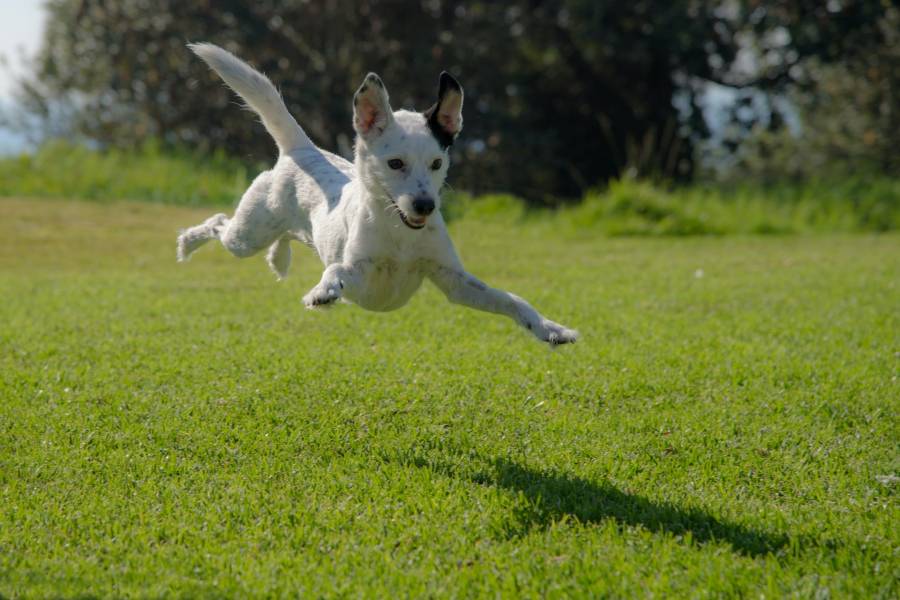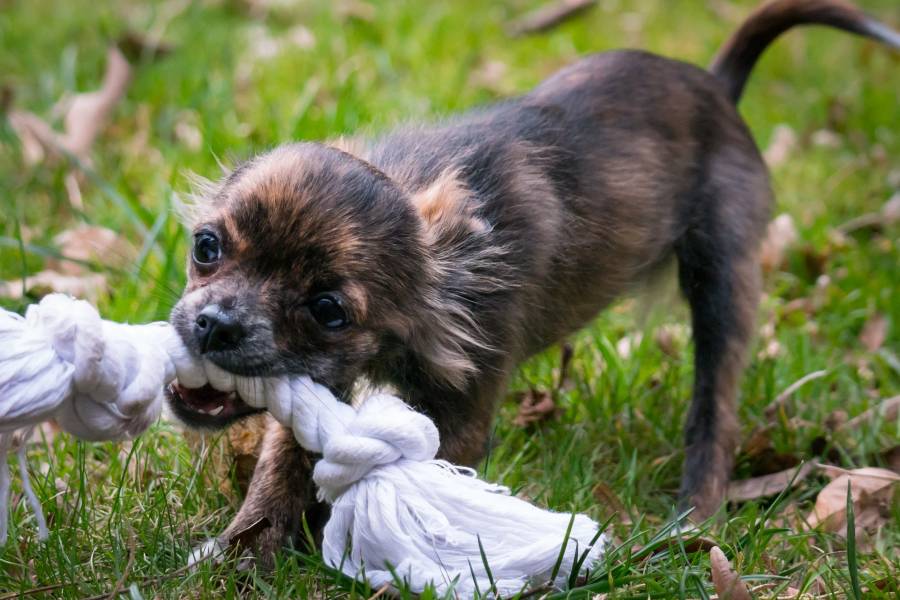Quick Navigation
- Reasons Why Your Dog Is Too Active After Being Spayed
- What Happens If A Dog Becomes Too Active After Spay?
- How long Until Dog Is Back To Normal After Spay?
- How To Keep My Dog Inactive After Spay?
- Don’t Let Her Out Of The House For At Least 24 Hours
- Don’t Leave Your Pet Alone After Surgery
- Make Sure That Your Dog Has Enough Water And Food
- Watch Out For Signs Of Postoperative Infection
- Call Your Vet If You Notice Any Problems
- Make Sure The Area Is Clean
- Let Your Dog Sleep
- Use Pain Medication
- Keep Her Away From Other Dogs
- Confine Your Dog
- Conclusion
If you’ve ever had a dog spayed or neutered, then you probably already know that there are a lot of downtimes involved after surgery.
It’s normal for dogs to spend anywhere between 2 weeks and four months recovering from their procedure.
During this time, your pet needs to stay inactive and rest.

However, there are times a dog becomes so active after spaying and suddenly runs around like crazy, and you are wondering why.
It could be because her hormones are out of whack, but there are other reasons why your dog might act differently after being spayed or neutered.
Here are some possible causes of why your dog is too active after getting spayed.
Reasons Why Your Dog Is Too Active After Being Spayed
1. Too Much Sedative
Sedatives can cause your dog to become restless and hyperactive after spaying.
If you give your dog too much medication before she gets spayed, it will make her more anxious and energetic than usual.
It can lead to her acting in ways that seem strange to you.
2. Excessive Bleeding
Bleeding is another reason why your dog may be too active after getting spayed.
The longer the bleeding lasts, the more likely your dog will have an infection.
If the bleeding is excessive, you should take your dog to the veterinarian.
3. Painful Recovery
Dogs who get spayed or neutered usually experience pain during the recovery process.
It can result in them feeling uncomfortable and agitated.
Your dog may also feel depressed because she feels sad about what happened to her body.
She may even try to hide her discomfort by hiding under furniture or jumping on people.
4. Change In Hormonal Level
After your dog has been spayed, she will go through changes in her hormone levels.
These changes may cause your dog to be too active.
For instance, she may start having trouble sleeping at night.
Or she may want to play all day long instead of resting.
5. Spaying Or Neutering Too Soon
It is not uncommon for dogs who have just undergone surgery to be a little anxious about their new situation.
It can make them overly excited and hyperactive.
If this happens, it may take several days before the effects wear off.
6. Spaying Or Neutering Too Late
Some dogs will continue to show signs of anxiety and hyperactivity even after they’ve had their spays or neuters.
The reason for this is that their bodies haven’t yet fully adjusted to the changes that have occurred.
7. Stress From Surgery
Another reason why your dog is too active after spaying is stress.
A common cause of post-surgical stress is anesthesia.
During the surgery, dogs usually don’t feel pain, but they do experience discomfort afterward.
They also may become disoriented due to the drugs used to put them under.
In addition, they may have temporary blindness as well as nausea and vomiting.
All of these factors can contribute to increased activity levels following surgery.
8. Change In Diet
Dogs’ diets change after they undergo surgery.
They no longer get any food or water for up to 24 hours.
It means that they’ll be hungry and thirsty when they wake up.
So, you should feed your dog at least two meals per day while she recovers.
9. Changes In Behavior
After your dog has been spayed, the last thing you want to see is changing his normal behavior patterns.
Some dogs may seem more aggressive than usual or exhibit strange behaviors such as barking excessively or chewing on things.

What Happens If A Dog Becomes Too Active After Spay?
You may find your dog becoming too active after her spaying or neutering procedure.
She may start to jump up on people, chew on furniture, bark excessively, or run away.
Jumping after a spay or neuter is more common than many realize.
Due to their medications and surgeries, dogs occasionally feel a little under the weather.
Your dog’s behavior can seem a little weird immediately after being spayed because the anesthetic takes some time to wear off.
If your dog shows any of these signs, contact your veterinarian immediately.
He may suggest giving her a sedative to calm her down.
How long Until Dog Is Back To Normal After Spay?
Most dogs begin to return to their old selves within three weeks after their surgeries.
However, there are exceptions.
For example, some dogs remain nervous for months after their procedures.
Others may still be acting strangely after five months.
It’s essential to monitor your pet closely after her surgery and to seek veterinary care if necessary.
How To Keep My Dog Inactive After Spay?
If you’re concerned about your dog’s level of activity after her spay, here are some tips:
Don’t Let Her Out Of The House For At Least 24 Hours
After your dog has had surgery, it’s important that you don’t allow her to go outside until at least 24 hours have passed.
Because of the open cut around the area of the ovaries, when you take her outside before this period passes, she could bleed more than usual.
Don’t Leave Your Pet Alone After Surgery
When your dog comes out of anesthesia, ensure that someone stays with her until she’s fully awake.
During recovering from surgery, you can’t ignore the need for bathroom trips, and you can’t just throw open the door and let your dog run around outside.
When taking your dog outside, use a leash, but make sure it is short enough to prevent your dog from escaping into the yard.
Choose a fixed-length leash instead of the retractable one for the time being.
Otherwise, she could injure herself by jumping on people or running around.
Make Sure That Your Dog Has Enough Water And Food
After a dog has been spayed or neutered, don’t forget to provide enough water and food.
Dogs need lots of fluids during recovery because they lose a lot of blood.
Also, they need plenty of high-quality protein to rebuild muscle tissue.
Watch Out For Signs Of Postoperative Infection
Some dogs develop postoperative infections after spaying or neutering them.
If your dog develops redness, swelling, fever, or other signs of infection, call your veterinarian right away.
Call Your Vet If You Notice Any Problems
Call your vet if you notice anything unusual about your dog’s behavior after her surgery.
It includes changes in appetite, breathing problems, vomiting, diarrhea, or seizures.
Make Sure The Area Is Clean
Before you begin any post-surgery care for your dog, make sure the spot where he’ll be resting is as clean as possible.
It means cleaning his bedding, changing his water bowl, and ensuring the cleanliness of all his toys.
If you haven’t done so yet, it’s also a good idea to bathe him after surgery.
Let Your Dog Sleep
Your dog should get at least 8 hours of uninterrupted sleep each night.
If he doesn’t get enough sleep, it could cause him to become lethargic and sluggish.
A lack of sleep can also lead to problems like depression and anxiety.
Use Pain Medication
It’s important to treat your dog’s pain properly after surgery.
Many veterinarians recommend using nonsteroidal anti-inflammatory drugs.
NSAIDs reduce swelling and inflammation, which can ease discomfort.
Keep Her Away From Other Dogs
If you have another pet, make sure they don’t come near your dog while he’s recovering.
They could accidentally hurt him if they tried to play with him.
Confine Your Dog
Confine your dog in a small space with a baby gate or crate.
If possible, place this on the floor so that he can’t get up.
You’ll need to do this until the swelling goes down.
During confinement, keep your dog engaged. There are so many different ways to exercise your pet’s mind!
You can purchase anything that makes your dog work for food or rewards while honing problem-solving abilities, including toys that dispense food.
Additionally, you can dedicate yourself to teaching your dog simple tricks or obedience training (that don’t involve a lot of action).
Conclusion
I hope this article helps you learn more about how to take care of your dog after he undergoes a surgical procedure.
By following these steps, you’ll help keep your dog healthy and happy.

Purrfect n’ Pawesome is the brainchild of Amanda, who has been into researching and writing about pets to help other pet parents in nurturing their adorable pets. Currently, she runs Purrfect n’ Pawesome along with her team of experienced and dedicated pet experts. Along with being an awesome writer and entrepreneur, Amanda is a cat mom to two innocently spoiled cats, Balanca and Scruffy.
She has been writing about pet care and nurturing and wants to share her readers’ experiences, learnings, and knowledge.
Over the years, she had the opportunity to work with various pet owners having multiple breeds, and that exposure gave her experience and the lessons of a lifetime.
Her family, her entire universe revolves around her two cats, who give her endless support and inspiration to move ahead with her objectives in life. Amanda is a live example of a balanced approach to all parenthood questions we all face in life.




![Why Are Female Dogs More Popular? [10 Reasons] Why Are Female Dogs More Popular? [10 Reasons]](https://purrfectnpawesome.com/wp-content/uploads/2021/01/Why-female-dogs-are-more-popular-150x150.jpg)

